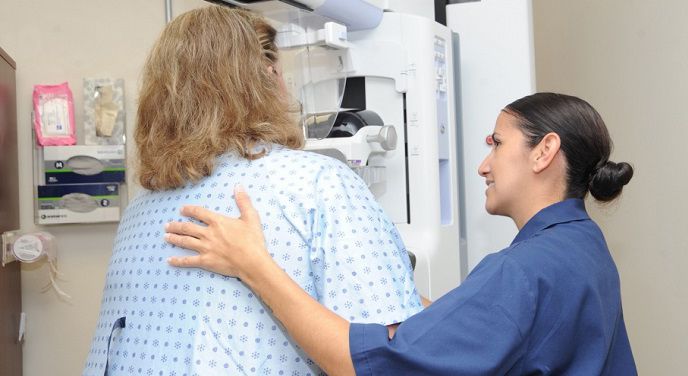If you have a question please check the FAQs below. If you still can't find the answer you're looking for then please feel free to contact us and we will be happy to try and help.
Having a Mammogram
A mammogram is an x-ray examination of the breasts and is a method of finding breast cancer at a very early stage. A female mammographer will compress your breasts, one at a time between two special x-ray plates and take the x-rays. The compression only lasts a few seconds and does not cause any harm to the breasts. Compression is needed to keep the breast still and to get the clearest picture with the lowest amount of radiation possible.
Some women find mammography uncomfortable and some find it painful as the breasts have to be held firmly in position and pressed to take a good x-ray. If you do experience pain it usually only lasts as long as the mammogram although it may continue for some time in a small number of women.
A female Mammographer will always perform the x-ray.
A mammogram takes a few minutes, however your whole visit to the screening unit will take about half an hour.
Any x-ray involves radiation but mammograms only require a very low dose. It is about the same as the dose a person receives by flying from London to Australia and back. The risk that such a low dose could cause a cancer is far outweighed by the benefits of early detection of breast cancer.
No. Breast screening aims to find breast cancer at an early stage when it may be too small for you or your doctor to feel. Finding breast cancer early greatly increases your chances of successful treatment.
Your mammogram will be performed either at a mobile screening van or permanent unit within a building, at one of our local screening sites.
It is advisable to wear separates, i.e. skirt and blouse/jumper or trousers and blouse/jumper. After the radiographer has checked your details; you will be taken through to a changing room and asked to undress to the waist and put on your blouse or jumper to cover up whilst waiting for your x-ray. Once in the x-ray room there will only be yourself and the female radiographer.
We do not have changing rooms at our hospital sites, you will be asked to undress once you are in the x-ray room.
If you do wear a dress we have gowns you can use to cover up and then tie around your waist during the mammogram. We also have privacy capes available if you would like one, you will be required to remove this during the mammogram. We want the mammogram to be a good experience so we will do everything we can to maintain your privacy and dignity throughout.
If your appointment is at one of our hospital sites you are welcome to bring someone to wait in the waiting room with you. It would not be possible for them to go into the x-ray room with you.
On our Mobile unit and at Bath Street we keep our waiting room for breast screening patients only, this is due to limited space and helps us to maintain privacy and dignity. You are welcome to bring someone with you but they will have to wait outside of the unit.
Please be aware our staff are unable to supervise any children while you are having your mammogram.
Your results should be sent to you within 2 weeks. You will be advised of any expected delays at the time of your screening.
Unfortunately we are unable to allow friends or relatives to act as a translator. Please let us know if you need a translator so we can book an appropriate appointment for you. This will be at one of our hospital sites and we will normally use a telephone translator. If any further tests are required, we will normally book an interpreter to come to the department.

